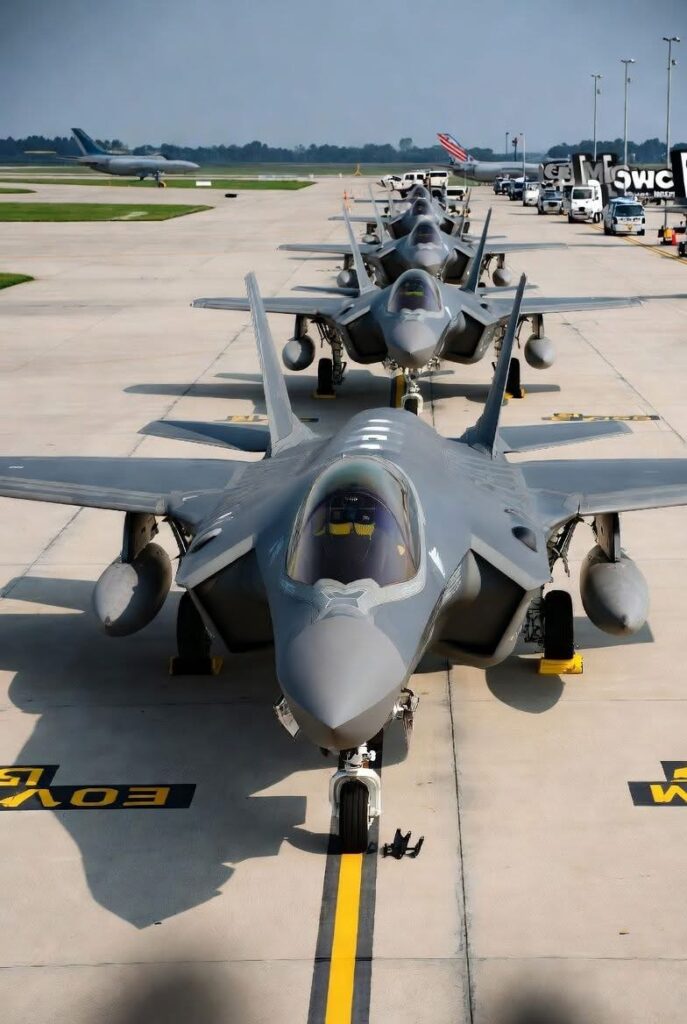
The F-35 Lightning II is one of the most advanced fighter aircraft ever developed, representing the pinnacle of modern military aviation. Designed and produced by Lockheed Martin, the F-35 is a fifth-generation multirole stealth fighter that combines cutting-edge technology, agility, and versatility. It was created to serve the air forces, navies, and marine corps of the United States and its allies, with the goal of replacing older aircraft such as the F-16 Fighting Falcon, AV-8B Harrier, and F/A-18 Hornet.
Development of the F-35 began in the 1990s under the Joint Strike Fighter (JSF) program. The U.S. Department of Defense sought a single platform that could meet the varied needs of multiple branches of the military while remaining cost-effective. Lockheed Martin’s design won the contract in 2001, and the aircraft’s first flight took place in 2006. Since then, the program has grown into an international partnership, with several allied nations contributing to production and development, including the United Kingdom, Italy, Australia, and Japan.
The F-35 comes in three main variants. The F-35A is the conventional takeoff and landing (CTOL) version, used primarily by air forces. The F-35B is the short takeoff and vertical landing (STOVL) version, designed for operations from smaller ships and austere bases, making it particularly useful for the U.S. Marine Corps and the Royal Navy. The F-35C is the carrier-based variant, built for catapult-assisted takeoffs and arrested landings on aircraft carriers. Despite their differences, all three versions share a high degree of commonality in systems, avionics, and design, simplifying maintenance and logistics.
One of the F-35’s most notable features is its stealth capability. Its radar-absorbing materials, sleek design, and internal weapons bays allow it to avoid detection by enemy radar systems. This gives pilots the advantage of striking first without being seen. Beyond stealth, the F-35 is also known for its advanced avionics and sensor fusion. The aircraft’s sensors collect and process vast amounts of data, presenting the pilot with a complete picture of the battlespace through the helmet-mounted display system (HMDS). This technology allows pilots to see through the aircraft, target enemies with precision, and share information seamlessly with other aircraft and ground units.
The F-35 is powered by the Pratt & Whitney F135 engine, one of the most powerful jet engines ever built. It enables the aircraft to reach speeds of around Mach 1.6 while maintaining agility in combat. Its range and endurance also make it suitable for both air superiority and strike missions. The F-35 can carry a variety of weapons, including air-to-air missiles, precision-guided bombs, and air-to-ground munitions, all while maintaining its stealth profile.
Despite its many strengths, the F-35 program has faced criticism over cost overruns, production delays, and maintenance challenges. However, as the aircraft matures, many of these issues have been addressed, and its combat performance has proven impressive in training and operational deployments.
Overall, the F-35 Lightning II represents a major leap forward in fighter design. It combines stealth, speed, intelligence, and versatility into a single platform capable of dominating the modern battlefield. As technology continues to evolve, the F-35 is expected to remain a cornerstone of allied air power for decades to come.


